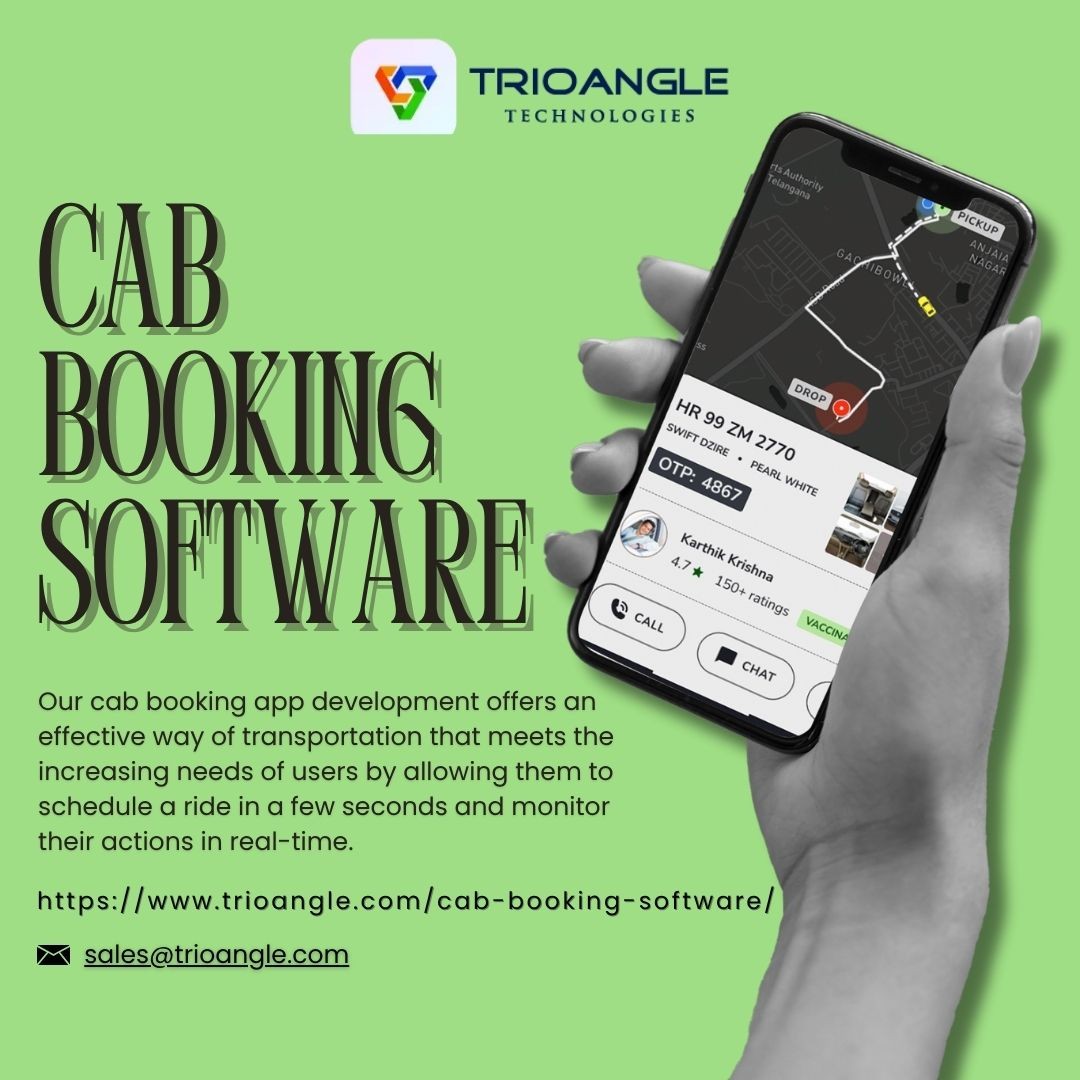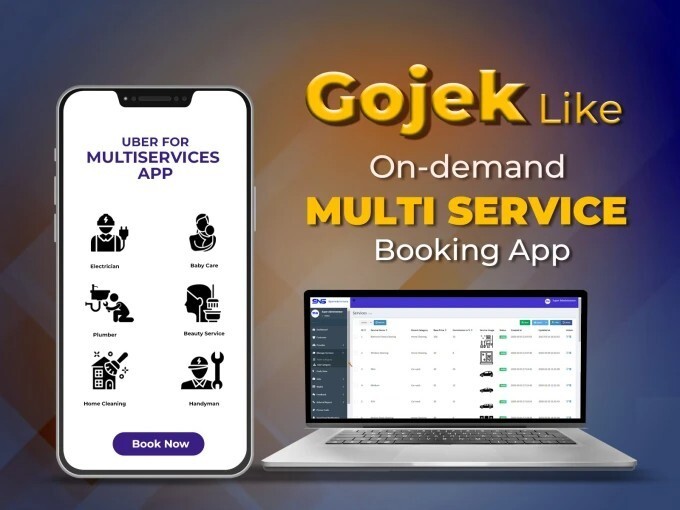✨ Launch your app. Grow your brand. Drive your success.
Start Now: https://migrateshop.com/ub...
#migrateshop #uberclone #ubercloneapp #OnDemandTaxiApp #OnDemandServices #TaxiAppDevelopment #RideHailing #taxiapp #entreprenure #business #apps
Learn more: https://www.spotnrides.com...
Whatsapp: https://wa.me/919600695595
#HandymanApp #HandymanBusiness #OnDemandHandyman #HandymanServices #ServiceAppDevelopment #HomeRepairApp #SpotnRides #HandymanStartup #MobileAppSolutions #HandymanBookingApp #UberforHomeservices #HomeServicesApp
Want to create a Forex trading app that helps traders maximize profits and gives your business an edge? Koinkart delivers Forex Trading App Development with smart automation and advanced analytics to boost ROI.
Explore the features designed for our clients:
AI-based trade insights
Automated trading bots
Low-latency order execution
Advanced risk management modules
We develop apps that make trading efficient, profitable, and user-friendly. Build your personalized Forex app today with Koinkart!
📲 Get Live Demo or Quote Now!
🌐 Website: https://www.koinkart.org/f...
📞 WhatsApp: +91 93842 63771
Transform the mobility market with Oyelabs’ Uber clone—live dispatch, GPS tracking, wallet & payments, driver & rider apps, and a powerful admin panel. Build your own branded ride-sharing solution today!
https://oyelabs.com/uber-c...
#uberclone #RideSharingApp #TaxiStartup #OnDemandTransport #MobilitySolution
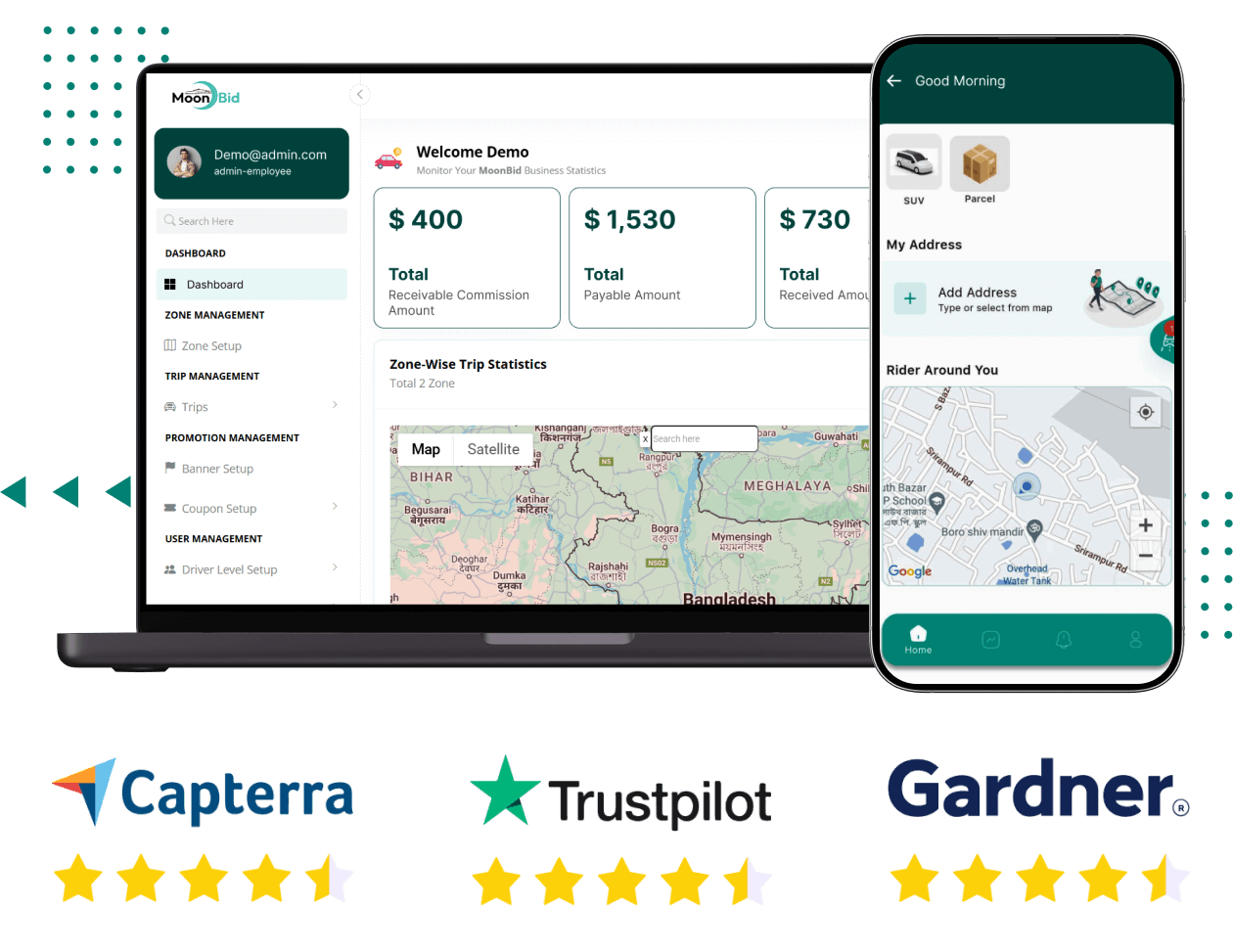
Uber Clone - Build Your Own Online Taxi Booking App
Build your own ride-sharing and taxi booking app with our Uber Clone solution. A customizable, scalable, and secure platform to launch your on-demand transportation business.
https://oyelabs.com/uber-clone/Discover more: https://www.spotnrides.com...
Whatsapp: https://wa.me/919600695595
#watertaxiapp #AustralianWaterTaxiapp #taxibookingapp #WaterTaxibookingApp #WaterTaxibookingAppinAustralia #Watertaxibusiness #WaterTaxiinAustralia #TaxiAppDevelopment #eatertaxiscript #taxibookingsoftware #TaxiBusiness #taximanagementsoftware #taxicloneapp #uberclone #ubercloneapp
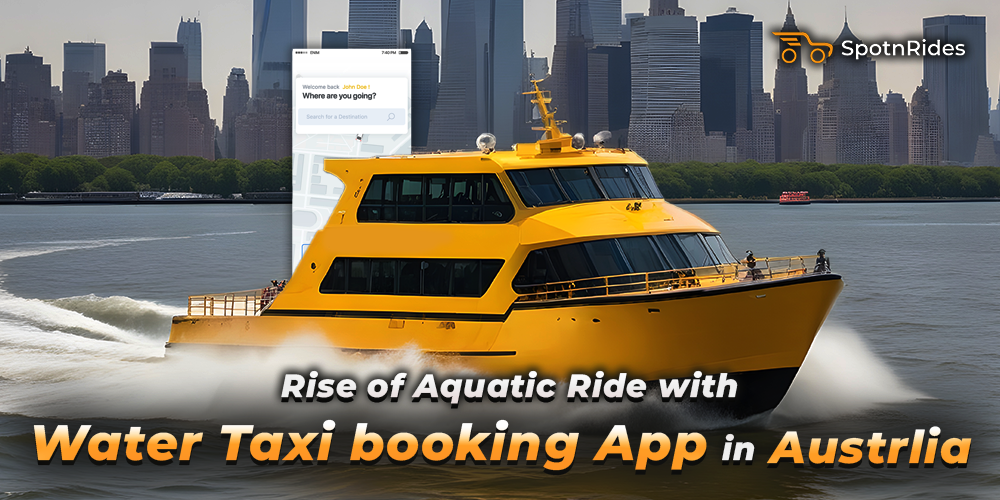
Rise of Aquatic Ride with Water Taxi booking App in Australia - SpotnRides - AI Powered Taxi Booking App
Overview of the Australian Water Taxi Sector The craze of water transport is always the same from historic periods. Even before the hundreds of years when proper bridges were not in use, water transportation played a major role. Days have changed but the method of transportation is still in practice..
https://www.spotnrides.com/blog/rise-of-aquatic-ride-with-water-taxi-booking-app-in-australia/Read the full blog: https://www.spotnrides.com...
Whatsapp: https://wa.me/919600695595
#saftyfeaturesformobileapp #SOS #SOSFetures #SOSinMobileApp #TrendsinSOS #uberclone #ubercloneapp #uberfortow #taxidispatchsoftware #RideHailing #UserSafety #CustomerLoyalty #SpotnRides #ridesharing #AppSafety #TrustMatters #SafeRides #OnDemandApp

Exploring How SOS Features Deal with Safety and Increase Loyalty of Users - SpotnRides - AI Powered Taxi Booking App
A stressful or emergency situation cannot be predicted. In such an unexpected situation, SOS will be a helping hand. The term SOS has transcended its traditional meaning of distress signals. SOS now stands as a symbol of technological evolution and our interconnected society. Used during unexpected ..
https://www.spotnrides.com/blog/exploring-how-sos-features-deal-with-safety-and-increase-loyalty-of-users/Taxi apps have revolutionised the way people commute in today's fast-paced digital environment. Selecting the best taxi app development company is essential, whether you're an established company looking to increase your online presence or a startup hoping to start your own ride-hailing service.
Locating a development partner who is aware of your particular market needs, consumer behaviour, regulatory landscape, and competitors is crucial to the success of your taxi app.
The procedures and factors you need to take into account when looking for a taxi app development business that really fits your industry will be covered in this in-depth guide.
Summing Up!
Selecting the best taxi app development business necessitates more than just technical know-how; it also calls for a thorough comprehension of your target market, user trends, and regional transportation requirements.
Select a development team that shares your vision by making sure they provide scalable and customisable solutions, thoroughly describing your business objectives, investigating possible partners, and assessing their portfolios.
In addition to developing an app, the ideal partner assists you with developing a competitive, user-friendly, and long-lasting platform that is customised for your target market.
Take the time to choose wisely; it’s an investment in your success.
https://www.trioangle.com/...
#TaxiAppDevelopment #taxibookingapp #OnDemandTaxiApp #TaxiAppUSA #SmartTaxiSolutions #DigitalTaxiSolutions #TaxiStartup
Looking for the best app for restaurant delivery? We build feature-rich food delivery apps, including fast food delivery app and grocery & food delivery app. Grow like UberEats & DoorDash. Free demo available – connect with us today!
Free Demo: https://www.trioangle.com/...
Contact:
salestrioangle.com | +91 6379630152 | Trioangle_Technologies
#FoodDeliveryApps #RestaurantDeliveryApp #FastFoodDeliveryApp #GroceryDeliveryApp #BestDeliveryApp #deliverybusiness #DeliveryAppDevelopment #FoodAppStartup #OnDemandDeliveryApp #FoodBusinessGrowth #ubereatsclone #doordashclone #justeatclone #talabatclone #DeliverooClone
Discover the real cost of fitness app development in India. From basic workout trackers to advanced AI-powered fitness apps, explore pricing, features, and factors affecting development costs. Get expert insights to plan your fitness app budget in 2025.
for more: https://duplextech.com/blo...
Discovering the perfect taxi app development company is quite easy when you apply the right tactics. Am I confusing you? Hahh. Okay.
Let me tell you. It is necessary to collaborate with the appropriate development company in order to create a successful taxi app.
The development partner you choose has a significant impact on the quality, performance, user experience, and continuing support of your app.
However, with so many businesses providing taxi app development services, how can you identify the best fit? Here are key factors and practical tips to guide your decision.
Continuous User Experience
It is crucial to consider experience and knowledge while choosing a taxi app development business.
An organisation with a track record of successfully developing taxi apps is aware of the particular technological difficulties involved, including GPS integration, real-time tracking, payment gateway configurations, and local regulatory compliance.
Skilled developers reduce development time by foreseeing possible problems and offering creative solutions.
Additionally, knowing the newest trends in the industry guarantees that your taxi app is scalable and competitive as the market changes.
Summing Up!
Now, it's clear to discover the best taxi app development company by analysing these key factors. Ensure your taxi app development services have a strong foundation to break all the obstacles easily.
So that you can reach your target audience immediately and generate more revenue growth.
The tricks are at your fingertips. What are you waiting for? Just start to find your perfect taxi app development company.
https://www.trioangle.com/...
#TaxiAppDevelopment #taxibookingapp #RideHailingApp #TaxiBusinessSolutions #OnDemandTaxiApp #RideSharingAppDevelopment #TaxiAppCompany #SmartTaxiSolutions
Digital payment apps are shaping the future of financial transactions, and entering this booming industry at the right time can give you a competitive edge. With our Cash App Clone Script, you can launch a high-performing, scalable, and revenue-generating P2P payment platform tailored to your business goals.
know more: https://www.troniextechnol...

Cash App Clone Script | Build your P2P Payment App now
Launch a customizable Cash App clone in weeks with P2P payments, crypto trading, and secure fintech features, cost-effective and scalable.
https://www.troniextechnologies.com/cash-app-clone-scriptMaking quality education more accessible in rural areas of Nigeria is a complex undertaking that requires a holistic and sustained approach, addressing issues across infrastructure, human resources, technology, community engagement, and funding.
Here's how it can be achieved:
I. Infrastructure and Facilities Development:
Context-Specific School Construction and Renovation:
Durable & Local Materials: Build and renovate school buildings using durable, locally sourced, and climate-appropriate materials. Designs should consider natural lighting and ventilation.
Essential Amenities: Ensure all schools have basic facilities: clean and functional toilets (separate for boys and girls), access to clean water, reliable electricity (solar power is a viable option), and proper ventilation.
Flexible Learning Spaces: Create adaptable classrooms that can accommodate different learning styles and potentially multi-grade teaching, which is common in smaller rural schools.
Libraries and Labs: Equip schools with functional libraries and basic science/computer laboratories. These can be shared resources among clusters of schools.
Mobile and Satellite Learning Centers:
For extremely remote or sparsely populated areas, explore mobile classrooms or "learning hubs" that rotate among communities, or satellite learning centers that provide access to digital resources and connectivity.
II. Qualified and Motivated Teachers:
Incentives for Rural Deployment:
Improved Remuneration: Offer attractive salary packages, allowances, and hardship pay for teachers willing to serve in rural areas.
Housing and Utilities: Provide subsidized or free housing, access to reliable electricity, and potable water to make rural living more appealing.
Career Advancement Opportunities: Create clear pathways for career progression for rural teachers, linked to performance and continuous professional development.
Loan Forgiveness/Scholarships: Offer student loan forgiveness or scholarships to aspiring teachers who commit to serving in rural schools for a specified period.
Targeted Recruitment and Training:
Local Recruitment: Prioritize recruiting teachers from within or near rural communities, as they are often more likely to stay due to existing ties.
Specialized Training: Equip teachers with skills for multi-grade teaching, differentiated instruction, and managing large classes. Training should also cover culturally sensitive pedagogy and community engagement.
Continuous Professional Development (CPD): Implement regular, accessible, and relevant CPD programs, utilizing blended learning models (online modules, local workshops) to reduce travel burdens.
Mentorship Programs: Pair experienced urban teachers with rural counterparts for mentorship and support.
III. Leveraging Technology (Bridging the Digital Divide):
Sustainable Power and Connectivity:
Solar Power: Prioritize equipping rural schools with reliable solar power systems to run computers, projectors, and charging stations.
Affordable Internet: Work with telecom providers and government agencies (e.g., NCC, NITDA) to extend affordable, reliable internet connectivity to rural areas, perhaps through community Wi-Fi hotspots or satellite internet.
Digital Learning Resources:
Tablets/E-readers: Provide students and teachers with rugged, low-cost tablets preloaded with digital textbooks, educational apps, and interactive learning content (e.g., "Solar-Powered Tablets").
Learning Management Systems (LMS): Implement simple LMS platforms that can deliver content offline and sync when connectivity is available.
Educational TV/Radio: Utilize existing media (radio, TV) to deliver curriculum-aligned lessons, especially in areas with limited internet access.
Teacher Digital Literacy Training:
Train teachers not just on how to use technology, but how to integrate it effectively into their pedagogy to enhance learning outcomes.
IV. Community Engagement and Ownership:
School-Based Management Committees (SBMCs):
Strengthen and empower SBMCs with genuine decision-making authority and training in financial management, school development planning, and monitoring.
Encourage active participation of parents, traditional leaders, and community members in school governance, resource mobilization, and monitoring teacher attendance and performance.
Community Contributions:
Foster a sense of community ownership by encouraging local contributions (labor, materials, financial support) for school development projects.
Integrate schools into community life, making them centers for community development, adult literacy programs, and health awareness.
Sensitization and Advocacy:
Conduct targeted campaigns to raise awareness among rural parents about the value of education, especially for girls, and discourage child labor or early marriage.
V. Funding and Policy:
Increased and Targeted Funding:
Higher Education Allocation: Significantly increase the overall budget allocation to education, ensuring a substantial portion is dedicated to rural school development and teacher welfare.
Specific Rural Education Fund: Establish a dedicated fund for rural education, managed transparently, to address unique challenges.
Public-Private Partnerships (PPPs): Encourage and incentivize private sector involvement through CSR initiatives, grants, and direct investment in rural schools.
Innovative Financing: Explore mechanisms like education bonds, diaspora engagement, and philanthropic partnerships to supplement government funding.
Flexible and Context-Specific Policies:
Local Curriculum Adaptation: Allow for some flexibility in curriculum delivery to address local contexts, needs, and cultural nuances, while maintaining national standards.
Remote Learning Policies: Develop clear policies for remote and blended learning that can be effectively deployed during emergencies or to support continuous learning.
Data-Driven Planning: Establish robust data collection and analysis systems to identify out-of-school children, monitor learning outcomes in rural areas, and allocate resources effectively based on needs.
Making quality education accessible in rural Nigeria requires sustained political will, a commitment to transparent resource utilization, and genuine collaboration among all stakeholders to overcome the geographical, economic, and social barriers.
Designed to ease chronic pain, inflammation, and stress holistically.
Use This Discount Code To Get a 15% Offer DISCOUNT CODE: AYUSHO15
Call Us: +91 95664 46688
Mail Us: infoayushohealth.com
Buy now: https://ayushohealth.com/s...
Play Store: https://play.google.com/st...
App Store: https://apps.apple.com/mu/... #CannaCare #AyurvedicPainRelief #CannabisWellness #AyushoExclusive #CANNAPAIN10CAPS #CANNAPAIN #AyushoHealth
The emergence of ride-hailing services has reshaped urban transportation, with on-demand apps becoming the go-to solution for taxi services. A cab booking software is at the core of any successful taxi app. It enables everything from booking management to driver dispatching.
Final Notes
From this blog, you now understand that cab booking software is essential for taxi app development.
The features stated above demonstrate the way it streamlines ride-hailing operations, improves user experience, and promotes business scalability.
Get Ready to Build Your Taxi App Today!.
https://www.trioangle.com/...
#TaxiStartup #DigitalTaxiBusiness #UKRideHailing #CabBookingSoftwareUK #USATaxiTech #OnlineCabBooking #TaxiSoftware #OnDemandTaxiSA
#CabBookingSoftwareSA
Visit - https://www.spotnrides.com...
WhatsApp - https://wa.me/919600695595
#HandymanApp #HomeServicesApp #HandymanAppDevelopment #OnDemandHandyman #HomeRepairApp #ServiceBookingApp #appforhandyman #HandymanBusiness #BuildYourApp #CustomAppDevelopment #HomeServiceSolutions #AppForProfessionals #FixItApp #ServiceMarketplace #TechForTrades #VoiceBookingApp #AIPoweredApp #HomeMaintenanceApp #HandymanStartup #AppForEntrepreneurs
Visit - https://www.uplogictech.co...
WhatsApp - https://wa.me/919600695595
#uberclone #ubercloneapp #taxibookingapp #RideHailingApp #CabBookingApp #VoiceBooking #AIpowered #TaxiAppDevelopment #BookARide #OnDemandTaxi #RideNow #SmartTaxiApp #MobilitySolutions #AppForTaxi #VoiceBooking #AIPoweredApp #VoiceEnabledApp #HandsFreeBooking #SpeakToBook #FutureOfRideHailing #NextGenTaxiApp #StartupTech #AppForEntrepreneurs #LaunchYourApp #TaxiBusiness #FleetManagement #CustomAppDevelopment
The crashes, which began late last year and carried into 2025, were the tipoff to a sophisticated cyberattack that may have allowed hackers to infiltrate a phone without a single click from the user.
The attackers left no clues about their identities, but investigators at the cybersecurity firm iVerify noticed that the victims all had something in common: They worked in fields of interest to China's government and had been targeted by Chinese hackers in the past.
Foreign hackers have increasingly identified smartphones, other mobile devices and the apps they use as a weak link in U.S. cyberdefenses. Groups linked to China's military and intelligence service have targeted the smartphones of prominent Americans and burrowed deep into telecommunication networks, according to national security and tech experts.
It shows how vulnerable mobile devices and apps are and the risk that security failures could expose sensitive information or leave American interests open to cyberattack, those experts say.
“The world is in a mobile security crisis right now,” said Rocky Cole, a former cybersecurity expert at the National Security Agency and Google and now chief operations officer at iVerify. “No one is watching the phones.”
US zeroes in on China as a threat, and Beijing levels its own accusations
U.S. authorities warned in December of a sprawling Chinese hacking campaign designed to gain access to the texts and phone conversations of an unknown number of Americans.
Tired of swiping and texting with no real connection? Join us for a relaxed, in-person singles networking event designed for genuine conversations, new friendships, and real-world chemistry. This isn’t online dating—just good vibes, great people, and an easygoing space to meet other singles in your area. Whether you're looking for love or simply want to expand your social circle, come enjoy an evening of authentic connection—no apps required. Visit for more info at https://www.eventbrite.com...
Visit: https://spotnrides.com/
Whatsapp: https://wa.me/919600695595
#taxidispatchsoftware #aibasedtaxiapp #uberclone #ridehailingbusiness #ridesharing #taxibookingapp #ridebooking #taxibookingsoftware #taxibookingapp #uberclonescript #ubercloneappscript #mobileappdevelopmentcompany #ondemandappdevelopment #businessowner #taxifapp #taxieu #g7taxipersonal #grab #careem #lyftclone #capifyclone #didiclone #wheelycloneapp #addisonlee #curb #gettcorporate #bolt #flywheel #blacklane #bitaksiclone #indrive #taximobilitydevelopment #joyride #cabreservationapplication #ondemandrideapp #localridehailingapp #reservationsoftwarefortaxis #airporttransferapp #nextgentaxibookingapp #localshuttletaxi #roundtriptaxi
New Delhi and Beijing reached a milestone pact in October on lowering military tensions on their Himalayan border and have begun taking baby steps to restore ties following talks between Chinese President Xi Jinping and Indian Prime Minister Narendra Modi in Russia.
India's foreign ministry said on Thursday that Misri's visit "flows from the agreement at the leadership level to discuss the next steps for India-China relations, including in the political, economic, and people-to-people domains".
The military and diplomatic tensions sparked by the 2020 clash hurt ties in other areas as India slowed visa approvals for Chinese nationals, banned popular Chinese mobile apps and tightened scrutiny of investments from China.
They think iOS 18 is a POS.
Apple’s highly anticipated iOS 18 has received app-ocalyptic online reviews since its Monday debut. Many techies have slammed the so-called “biggest upgrade in history” for making it easier for philandering partners to cheat and also for having an unusable photo function that made them “want to throw up,” among other pitfalls.
iPhone lovers were astonished at the cutting-edge features, most notably the generative AI capabilities dubbed Apple Intelligence that allowed for a smarter Siri, customized emojis and more.
However, many grew suspicious of the new function that allows users to lock and hide apps on their home screen. While this feature was designed to safeguard sensitive info, detractors feared that it would allow unfaithful significant others to commit adultery, with one X critic declaring, “iOS 18 update, was designed by a cheater for s
The islands, located in the Indian Ocean, have been British-owned since 1814 and include Diego Garcia, which hosts a US military base.
Plans to return the Chagos Islands to Mauritius were set to be dropped last year amid opposition from Grant Shapps, then the defence secretary, and concerns about Mauritius’s alliance with China.
But asked by Lord Kempsell, the Government said it was “too early” to predict the outcome of negotiations.
Baroness Chapman, a Foreign Office minister, said: “The Prime Minister and Foreign Secretary met the Mauritian prime minister on July 23 and committed to continuing negotiations on the exercise of sovereignty over Chagos. “It is too early to speculate on timelines or conclusions, but it is the Government’s priority to resolve this long-standing and important issue, including ensuring the long-term secure and effective operation of the joint UK-US military base on Diego
By Hugo Keji (Part 2)
Section 1: Introduction
Labeling and certification schemes play a critical role in helping consumers make informed choices between imported and local products. With a wide range of products available in the market, consumers often face challenges in distinguishing between imported and locally produced goods and in assessing their quality and safety. This article explores how effective labeling and certification can aid consumers in making better purchasing decisions.
Section 2: The Role of Labeling
Transparency and Information
Labels provide essential information about a product, including its origin, ingredients, and manufacturing processes. This transparency helps consumers:
Identify whether a product is imported or locally produced.
Make informed decisions based on the product’s attributes and compliance with their preferences and values.
Standardization of Labels
Standardized labels ensure consistency in the information presented, making it easier for consumers to compare products. For instance:
International labeling standards for imported goods facilitate clear communication and understanding across different markets.
Consistent labeling practices help consumers quickly assess and compare product attributes.
Nutritional and Safety Information
Nutritional labels inform consumers about the health benefits or risks associated with a product. Safety labels indicate compliance with health and safety regulations, giving consumers confidence in the product’s safety. For example:
Nutritional information on food products helps consumers make healthier choices.
Safety labels on electronics and toys reassure consumers about the product’s safety standards.
Section 3: The Role of Certification Schemes
Quality Assurance
Certification marks indicate that a product has been independently tested and meets specific quality standards. Examples include:
ISO certification, which ensures that products meet international quality management standards.
USDA Organic certification, which guarantees that agricultural products are produced following organic farming practices.
Environmental and Ethical Standards
Certifications related to environmental impact and ethical practices help consumers make choices aligned with their values. Examples include:
Fair Trade certification, which ensures fair wages and ethical labor practices in the production of goods.
Rainforest Alliance certification, which promotes sustainable farming and conservation of natural resources.
Local Certification Schemes
Local certifications highlight products that meet national or regional standards, promoting local industry. Examples include:
Certified South African, which promotes products made in South Africa and adhering to local quality standards.
Made in the USA, which supports American manufacturing and quality assurance practices.
Consumer Trust and Confidence
Recognized certification marks build trust and confidence in the quality and safety of both imported and local products. For instance:
A product bearing the Energy Star certification is trusted for its energy efficiency, whether it is imported or locally produced.
Consumers rely on certification marks to ensure that products have been vetted by reputable organizations.
Section 4: Impact on Consumer Choices
Ease of Decision-Making
Clear labeling and recognizable certification marks simplify the decision-making process for consumers. They enable quick assessment of:
Product attributes such as quality, safety, and ethical standards.
Compliance with personal standards and preferences, making it easier to choose between imported and local products.
Promotion of Local Products
Local certification schemes can promote the consumption of locally produced goods by highlighting their quality and adherence to local standards. For example:
Local certifications can emphasize the freshness and sustainability of local produce.
Encouraging consumers to support the local economy through informed choices.
Comparative Advantage
Certification schemes can give local products a competitive edge by showcasing unique attributes such as organic farming or sustainable practices. Conversely, imported goods with internationally recognized certifications assure consumers of their quality and safety. For instance:
Imported electronics with ISO certification are trusted for their quality.
Locally produced organic foods with local certifications are preferred for their freshness and traceability.
Section 5: Case Studies
Organic Food Products
USDA Organic vs. local organic certifications: Both certifications provide assurance of organic farming practices, enabling consumers to choose based on their preference for local or imported goods. For instance:
USDA Organic certification is recognized internationally, providing trust in imported organic products.
Local organic certifications highlight the benefits of locally produced organic foods, such as freshness and support for local farmers.
Fair Trade Coffee
Fair Trade certification helps consumers identify ethically produced coffee, whether imported or local. This certification supports fair wages and sustainable practices, influencing consumer preferences:
Fair Trade certified coffee ensures that farmers receive fair compensation, promoting ethical consumption.
Consumers can choose Fair Trade certified coffee based on their preference for supporting ethical practices, regardless of the product's origin.
Energy-Efficient Appliances
Energy Star (USA) and EU Energy Label: These certifications help consumers identify energy-efficient products, promoting both imported and local appliances that meet high standards. For example:
Energy Star certification is recognized for promoting energy-efficient appliances, regardless of their origin.
EU Energy Label provides clear information on energy consumption, aiding consumers in making environmentally conscious choices.
Section 6: Strategies for Effective Implementation
Education and Awareness Campaigns
Educating consumers about the meaning and importance of various labels and certifications is crucial. This can be achieved through:
Advertising campaigns and in-store promotions that highlight certified products.
Providing information through digital platforms and educational programs.
Government and Industry Collaboration
Governments and industry bodies should work together to develop and enforce labeling and certification standards. Support for SMEs in obtaining certifications is also essential. For instance:
Collaboration can ensure that labeling standards are comprehensive and effectively communicated.
Support programs can help small businesses achieve certifications, enabling them to compete in the market.
Technological Integration
Using technology such as QR codes can provide additional information about product certifications and standards. This includes:
Developing apps and online resources to help consumers easily verify certifications and understand their significance.
Integrating QR codes on labels to offer detailed product information and enhance transparency.
Section 7: Conclusion
Labeling and certification schemes are vital tools for helping consumers make informed choices between imported and local products. They provide transparency, build trust, and promote quality assurance. Effective labeling and certification practices, combined with education and technological integration, can significantly enhance consumer confidence and support both local and imported products. Continued development and promotion of these schemes are essential for a well-informed and confident consumer base.
++++++++++++++++++++++++++++++++++++++++++++++
Be part of Health Data 101.... Health Data 101 by SapperTek INC registered in Taiwan. With servers in Asia, Europe and America. Hospitals, Private Clinics, Federal, State and Local Government health departs gets an online storage of all it's data secured 24/7/365 For ONLY USD$3 ... Your patients will appreciate it. Hospitals don't need paper work/cards again.
BE A PARTNER IN YOUR COUNTRY.
Contact for details: Email: sappertekincgmail.com Absolutely risk free and FREE for download...
App link: https://www.amazon.com/gp/... https://healthdata101.com
By Hugo Keji (Part 1)
How Labeling and Certification Schemes Help Consumers Make Informed Choices Between Imported and Local Products.
Overview of the importance of labeling and certification in consumer decision-making.
Brief discussion on the challenges consumers face in distinguishing between imported and local products.
The Role of Labeling:
Transparency and Information-
Provides detailed product information, including origin, ingredients, and manufacturing processes.
Helps consumers identify whether a product is imported or locally produced.
Standardization of Labels-
Ensures consistency in the information presented on labels, making it easier for consumers to compare products.
Adoption of international labeling standards for imported goods to facilitate clear communication.
Nutritional and Safety Information-
Nutritional labels inform consumers about the health benefits or risks associated with a product.
Safety labels indicate compliance with health and safety regulations, giving consumers confidence in product safety.
The Role of Certification Schemes:
Quality Assurance-
Certification marks indicate that a product has been independently tested and meets specific quality standards.
Examples: ISO certification, USDA Organic, Fair Trade
Environmental and Ethical Standards-
Certifications related to environmental impact and ethical practices help consumers make choices aligned with their values.
Examples: Fair Trade, Rainforest Alliance, Carbon Trust Standard.
Local Certification Schemes-
Local certifications highlight products that meet national or regional standards, promoting local industry.
Examples: Certified South African, Made in the USA
Consumer Trust and Confidence-
Recognized certification marks build trust and confidence in the quality and safety of both imported and local products.
Provide assurance that the products have been vetted by reputable organizations.
Impact on Consumer Choices:
Ease of Decision-Making-
Clear labeling and recognizable certification marks simplify the decision-making process for consumers.
Enable quick assessment of product attributes and compliance with personal standards.
Promotion of Local Products-
Local certification schemes can promote the consumption of locally produced goods by highlighting their quality and adherence to local standards.
Encourages consumers to support the local economy.
Comparative Advantage-
Certification schemes can give local products a competitive edge by showcasing unique attributes (e.g., organic, sustainable).
Imported goods with internationally recognized certifications can assure consumers of their quality and safety.
Case Studies:
Organic Food Products-
USDA Organic vs. local organic certifications: Both provide assurance of organic farming practices, enabling consumers to choose based on preference for local or imported goods.
Fair Trade Coffee-
Fair Trade certification helps consumers identify ethically produced coffee, whether imported or local, supporting fair wages and sustainable practices.
Energy-Efficient Appliances-
Energy Star (USA) and EU Energy Label: Help consumers identify energy-efficient products, promoting both imported and local appliances that meet high standards.
Strategies for Effective Implementation:
Education and Awareness Campaigns-
Educate consumers about the meaning and importance of various labels and certifications.
Use advertising and in-store promotions to highlight certified products.
Government and Industry Collaboration-
Governments and industry bodies should work together to develop and enforce labeling and certification standards.
Support small and medium-sized enterprises (SMEs) in obtaining certifications to compete in the market.
Technological Integration-
Use technology such as QR codes to provide additional information about product certifications and standards.
Develop apps and online resources to help consumers easily verify certifications and understand their significance.
Summary of the benefits of labeling and certification schemes in aiding consumer choices.
Emphasis on the importance of transparency, trust, and education in promoting informed consumer decisions.
Call to action for continued development and promotion of effective labeling and certification practices to support both local and imported products.
++++++++++++++++++++++++++++++++++++++++++++++
Be part of Health Data 101.... Health Data 101 by SapperTek INC registered in Taiwan. With servers in Asia, Europe and America. Hospitals, Private Clinics, Federal, State and Local Government health departs gets an online storage of all it's data secured 24/7/365 For ONLY USD$3 ... Your patients will appreciate it. Hospitals don't need paper work/cards again.
BE A PARTNER IN YOUR COUNTRY.
Contact for details: Email: sappertekincgmail.com Absolutely risk free and FREE for download...
App link: https://www.amazon.com/gp/... https://healthdata101.com
By Hugo Keji
Absolutely, technology has indeed made incredible strides, and smartphones are a prime example of this advancement.
They have evolved from simple communication devices into powerful multi-functional tools that can perform a wide range of tasks.
Smartphones can:-
1. Make and receive calls and texts.
2. Access the internet for browsing, emailing, and social media.
3. Run a variety of applications for productivity, entertainment, education, and more.
4. Take high-quality photos and videos.
Provide GPS navigation.
5. Offer health monitoring features like heart rate tracking.
6. Enable contactless payments.
7. Control smart home devices.
This convergence of functionalities into a single, portable device has transformed how we interact with the world and manage our daily lives.
Here are some more detailed ways in which smartphones have integrated multiple technologies and functionalities:
Communication:-
Calls and Texts: Basic phone functions have expanded to include video calls and multimedia messaging.
Email: Full email functionality, including attachments and syncing across devices.
Instant Messaging: Apps like WhatsApp, Telegram, and Signal offer encrypted messaging and multimedia sharing.
Internet Access:-
Browsing: Full web browsing capabilities, often with ad-blocking and data-saving features.
Social Media: Dedicated apps for platforms like Facebook, Twitter, Instagram, TikTok, Afriprime, Corkroo and healthdata101.
Streaming: High-definition video streaming from services like Netflix, YouTube, and Disney+.
Applications (Apps):-
Productivity: Tools like word processors, spreadsheets, presentation software, and project management apps (e.g., Microsoft Office, Google Workspace).
Entertainment: Games, music streaming (Spotify, Apple Music), and e-book readers (Kindle).
Education: E-learning platforms, language learning apps (Duolingo), and educational games.
Health and Fitness: Fitness tracking, diet and nutrition apps, meditation guides, and telemedicine services.
Photography and Videography:-
Cameras: High-resolution cameras with features like optical zoom, night mode, and portrait effects.
Editing: Built-in photo and video editing tools, as well as professional-grade apps like Adobe Lightroom and Premiere Rush.
Sharing: Instant sharing to social media or cloud storage services.
Navigation and Travel:-
GPS: Real-time navigation with traffic updates, route planning, and public transit information (e.g., Google Maps, Waze).
Travel Apps: Booking flights, hotels, and rental cars (e.g., Expedia, Airbnb), and ride-sharing services (Uber, Lyft).
Finance:-
Banking: Mobile banking apps allow for managing accounts, transferring money, and paying bills.
Payments: Contactless payments using NFC (e.g., Apple Pay, Google Pay) and QR code scanning.
Investments: Trading stocks, managing portfolios, and tracking cryptocurrencies (e.g., Robinhood, Coinbase).
Smart Home Integration:-
Control: Manage smart home devices like lights, thermostats, security cameras, and appliances through apps (e.g., Google Home, Amazon Alexa).
Automation: Set routines and automate tasks based on triggers like location or time of day.
Health Monitoring:-
Sensors: Track physical activity, heart rate, sleep patterns, and more.
Integration: Sync data with wearable devices like smartwatches (Apple Watch, Fitbit) and health apps (Apple Health, Google Fit).
Security:-
Biometric Authentication: Use of fingerprint sensors, facial recognition, and iris scanning for secure access.
Encryption: Secure communications and data storage.
Remote Management: Find and lock lost devices, and wipe data remotely.
Augmented Reality (AR) and Virtual Reality (VR):-
AR Apps: Enhance the real world with digital overlays for gaming, navigation, and education (e.g., Pokémon GO, IKEA Place).
VR Experiences: Immersive experiences for gaming, training, and virtual tours using VR headsets (e.g., Oculus, Google Cardboard).
The convergence of these technologies into a single device has not only simplified many aspects of daily life but also opened up new possibilities for communication, entertainment, productivity, and beyond.
SHARE YOUR COMMENTS AND QUESTIONS........
++++++++++++++++++++++++++++++++++++++++++++++
Health Data 101 by SapperTek INC registered in Taiwan.
With servers in Asia, Europe and America.
Hospitals, Private Clinics, Federal, State and Local Government health departs gets an online storage of all it's data secured 24/7/365
For ONLY USD$3 ... Your patients will appreciate it. Hospitals don't need paper work/cards again.
BE A PARTNER IN YOUR COUNTRY.
Contact for details: Email: sappertekincgmail.com
Absolutely risk free and FREE for download...
App link: https://www.amazon.com/gp/...
https://healthdata101.com
By Hugo Keji
Mitigating the impacts of climate change on agriculture in Africa requires a multifaceted approach that combines technology, sustainable practices, policy support, and community engagement.
1. Adopting Climate-Resilient Agricultural Practices-
a. Crop Diversification
Variety Selection: Grow a diverse range of crops, including drought-resistant and heat-tolerant varieties, to reduce the risk of total crop failure.
Intercropping: Plant multiple crops together to improve soil health, reduce pests, and increase resilience to weather variability.
b. Conservation Agriculture
Minimum Tillage: Reduce soil disturbance to maintain soil structure and moisture.
Cover Cropping: Use cover crops to protect soil from erosion, improve fertility, and retain moisture.
Crop Rotation: Rotate crops to enhance soil nutrients and break pest and disease cycles.
c. Agroforestry
Integrating Trees and Crops: Incorporate trees and shrubs into farming systems to improve soil health, provide shade, and enhance biodiversity.
Windbreaks and Shelterbelts: Plant trees around fields to protect crops from wind and reduce soil erosion.
2. Improving Water Management
a. Efficient Irrigation Systems
Drip Irrigation: Implement drip irrigation to minimize water use and deliver water directly to plant roots.
Rainwater Harvesting: Collect and store rainwater for use during dry periods.
b. Water Conservation Techniques
Mulching: Apply mulch to retain soil moisture, reduce evaporation, and improve soil health.
Soil Moisture Monitoring: Use sensors to monitor soil moisture levels and optimize irrigation schedules.
3. Enhancing Soil Health
a. Organic Farming Practices
Composting: Use compost to improve soil fertility and structure.
Green Manure: Plant cover crops that can be turned into the soil to enhance organic matter and nutrients.
b. Soil Conservation Techniques
Terracing: Build terraces on slopes to reduce soil erosion and runoff.
Contour Plowing: Plow along the contours of the land to minimize soil erosion.
4. Leveraging Technology and Innovation
a. Climate Information Services
Weather Forecasting: Provide accurate and timely weather forecasts to help farmers plan their activities.
Early Warning Systems: Develop early warning systems for extreme weather events to enable farmers to take preventive measures.
b. Mobile Technology and Apps
Agricultural Advice: Use mobile apps to deliver tailored agricultural advice and climate-smart practices to farmers.
Market Information: Provide market information via mobile platforms to help farmers make informed decisions about when and where to sell their produce.
5. Building Resilient Farming Communities
a. Capacity Building and Training
Farmer Field Schools: Establish farmer field schools to teach climate-smart practices and adaptive strategies.
Extension Services: Strengthen agricultural extension services to provide continuous support and knowledge transfer to farmers.
b. Community-Based Adaptation
Participatory Approaches: Engage communities in identifying vulnerabilities and developing local adaptation strategies.
Local Knowledge Integration: Combine scientific knowledge with traditional practices to create context-specific solutions.
6. Policy Support and Advocacy
a. Supportive Policies and Legislation
Incentives for Sustainable Practices: Implement policies that provide incentives for adopting climate-smart practices and technologies.
Land Tenure Security: Ensure secure land tenure to encourage long-term investments in sustainable farming practices.
b. Investment in Research and Development
Climate-Resilient Crops: Invest in research to develop and distribute climate-resilient crop varieties.
Innovative Solutions: Support research on innovative solutions such as vertical farming, hydroponics, and aquaponics.
7. Financial Mechanisms and Insurance
a. Access to Finance
Microfinance: Provide microfinance options tailored to the needs of smallholder farmers to invest in climate-resilient practices.
Credit Facilities: Develop credit facilities with favorable terms for purchasing climate-smart technologies.
b. Agricultural Insurance
Crop Insurance: Introduce crop insurance schemes to protect farmers against losses due to climate-related events.
Weather Index Insurance: Develop weather index insurance products that trigger payouts based on specific weather conditions.
8. Regional and International Collaboration
a. Knowledge Sharing
Regional Networks: Establish regional networks for sharing knowledge, best practices, and innovations in climate-smart agriculture.
International Partnerships: Collaborate with international organizations to access funding, technology, and expertise.
b. Cross-Border Initiatives
Transboundary Water Management: Cooperate on transboundary water management to ensure equitable and sustainable use of water resources.
Regional Early Warning Systems: Develop regional early warning systems for climate-related risks.
With these strategies, African agriculture can become more resilient to the impacts of climate change, ensuring food security and sustainable livelihoods for millions of smallholder farmers.
SHARE YOUR COMMENTS AND QUESTIONS........
++++++++++++++++++++++++++++++++++++++++++++++
Health Data 101 by SapperTek INC registered in Taiwan.
With servers in Asia, Europe and America.
Hospitals, Private Clinics, Federal, State and Local Government health departs gets an online storage of all it's data secured 24/7/365
For ONLY USD$5 ... Your patients will appreciate it. Hospitals don't need paper work/cards again.
BE A PARTNER IN YOUR COUNTRY.
Contact for details: Email: sappertekincgmail.com
Absolutely risk free and FREE for download...
https://www.amazon.com/gp/...
https://healthdata101.com
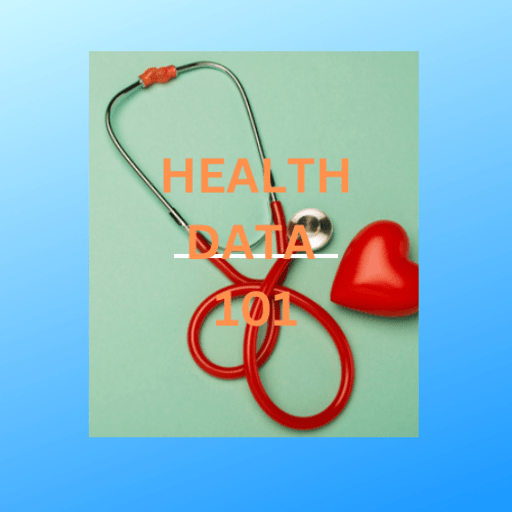
Health Data 101 - App on Amazon Appstore
Healthdata101-Manage Hospital and Health data.
https://www.amazon.com/gp/product/B0D514TH5SBy Hugo Keji
Supporting smallholder farmers to access markets and finance involves a multifaceted approach that addresses both logistical and financial barriers.
1. Improving Market Access:-
a. Infrastructure Development-
Roads and Transportation: Improve rural road networks and transportation services to facilitate easier access to markets.
Storage Facilities: Develop modern storage facilities to reduce post-harvest losses and maintain the quality of produce.
Market Places: Establish local and regional markets where farmers can sell their produce directly to consumers and traders.
b. Digital Platforms and Market Information-
Market Information Systems: Create mobile-based platforms that provide real-time information on market prices, demand trends, and buyer contacts.
E-Commerce Platforms: Develop and promote online marketplaces where farmers can sell their products directly to consumers, bypassing intermediaries.
c. Cooperative and Collective Action
Farmer Cooperatives: Support the formation of cooperatives to enable bulk purchasing of inputs, shared use of equipment, and collective marketing of produce.
Aggregation Centers: Establish centers where smallholder farmers can pool their produce, improving their bargaining power and access to larger markets.
2. Enhancing Access to Finance-
a. Financial Products and Services
Microfinance Institutions: Promote the establishment and expansion of microfinance institutions that offer tailored financial products for smallholder farmers.
Savings and Credit Cooperatives (SACCOs): Encourage the formation of SACCOs where farmers can save money and access low-interest loans.
Mobile Banking: Leverage mobile banking services to provide financial access to farmers in remote areas.
b. Credit and Loan Schemes
Agricultural Credit Schemes: Develop government-backed credit schemes that provide low-interest loans specifically for agricultural purposes.
Credit Guarantees: Implement credit guarantee schemes to reduce the risk for financial institutions lending to smallholder farmers.
c. Insurance Services
Crop Insurance: Introduce affordable crop insurance programs to protect farmers against losses due to natural disasters, pests, and diseases.
Livestock Insurance: Provide insurance products for livestock to safeguard against losses from disease outbreaks and theft.
3. Capacity Building and Training-
a. Financial Literacy
Training Programs: Conduct financial literacy programs to educate farmers on managing finances, accessing credit, and using financial services effectively.
Workshops and Seminars: Organize workshops and seminars on business planning, budgeting, and record-keeping.
b. Technical Assistance
Extension Services: Strengthen agricultural extension services to provide farmers with ongoing technical support and advice on improving productivity and profitability.
Business Development Services: Offer business development services that help farmers with market analysis, business planning, and connecting with buyers.
a. Supportive Policies
4. Policy and Regulatory Support
Subsidies and Incentives: Implement policies that provide subsidies for inputs and incentives for adopting sustainable farming practices.
Tax Breaks: Offer tax breaks for smallholder farmers and agribusinesses that invest in rural areas.
b. Regulatory Frameworks
Land Tenure Security: Ensure secure land tenure systems to encourage investment in land and long-term agricultural practices.
Market Regulations: Develop fair market regulations that protect smallholder farmers from exploitation by middlemen and large agribusinesses.
5. Partnerships and Collaborations-
a. Public-Private Partnerships (PPPs)
Investment in Infrastructure: Encourage PPPs to invest in rural infrastructure, such as roads, storage facilities, and market places.
Access to Technology: Facilitate partnerships that provide smallholder farmers with access to modern farming technologies and equipment.
b. NGOs and Development Agencies
Capacity Building Programs: Collaborate with NGOs and international development agencies to implement capacity building and market access programs.
Funding and Grants: Leverage funding and grants from development agencies to support initiatives aimed at improving market access and financial inclusion for smallholder farmers.
6. Adoption of Technology
a. Mobile Apps and Platforms
Agricultural Apps: Promote the use of mobile apps that provide agricultural advice, weather forecasts, and market information.
Digital Payment Systems: Encourage the use of digital payment systems to facilitate secure and convenient transactions.
b. Blockchain and Traceability
Blockchain Technology: Utilize blockchain technology to enhance transparency and traceability in the agricultural supply chain, ensuring fair prices and reducing fraud.
Traceability Systems: Implement traceability systems that allow consumers to track the origin of their food, increasing demand for produce from smallholder farmers.
Implementing these strategies, smallholder farmers can be better supported to access markets and finance, ultimately leading to increased productivity, higher incomes, and improved livelihoods.
SHARE YOUR COMMENTS AND QUESTIONS........
++++++++++++++++++++++++++++++++++++++++++++++
Health Data 101 by SapperTek INC registered in Taiwan.
With servers in Asia, Europe and America.
Hospitals, Private Clinics, Federal, State and Local Government health departs gets an online storage of all it's data secured 24/7/365
For ONLY USD$5 ... Your patients will appreciate it. Hospitals don't need paper work/cards again.
BE A PARTNER IN YOUR COUNTRY.
Contact for details: Email: sappertekincgmail.com
Absolutely risk free and FREE for download...
https://www.amazon.com/gp/...
https://healthdata101.com

Health Data 101 - App on Amazon Appstore
Healthdata101-Manage Hospital and Health data.
https://www.amazon.com/gp/product/B0D514TH5SBy Hugo Keji
Technology and innovation play crucial roles in boosting agricultural productivity in Africa by addressing various challenges faced by farmers.
Here are some key areas where technology and innovation can make a significant impact:
1. Precision Agriculture
Satellite Imagery and Drones: These technologies provide detailed data on crop health, soil conditions, and pest infestations, enabling farmers to make informed decisions about planting, irrigation, and pest control.
GPS Technology: GPS-guided equipment helps in precise planting, fertilization, and harvesting, reducing waste and improving efficiency.
2. Improved Crop Varieties
Genetically Modified Organisms (GMOs): Developing and distributing GMO crops that are resistant to pests, diseases, and extreme weather conditions can significantly increase yields.
Hybrid Seeds: Hybrid seeds that offer higher yields and better resistance to environmental stresses can be tailored to local conditions.
3. Mobile Technology and Apps
Agricultural Information Services: Mobile apps can provide farmers with real-time information on weather forecasts, market prices, and best farming practices.
Digital Financial Services: Mobile banking and digital payment platforms facilitate easier access to credit, savings, and insurance services for farmers.
4. Irrigation and Water Management
Drip Irrigation Systems: Efficient irrigation technologies like drip irrigation minimize water use while maximizing crop yields.
Smart Irrigation Systems: These systems use sensors and data analytics to optimize water usage, ensuring crops receive the right amount of water at the right time.
5. Post-Harvest Technologies
Storage Solutions: Innovations in storage, such as hermetic storage bags and solar-powered cold storage, reduce post-harvest losses and maintain the quality of produce.
Processing Equipment: Affordable and efficient processing equipment can add value to agricultural products, increasing farmers' incomes.
6. Mechanization
Affordable Machinery: Introducing cost-effective and locally appropriate machinery, such as small tractors and multi-crop threshers, can reduce labor intensity and increase productivity.
Renting Services: Establishing equipment rental services allows smallholder farmers to access machinery without the high costs of ownership.
7. Blockchain and Supply Chain Management
Traceability: Blockchain technology can enhance traceability and transparency in supply chains, ensuring that farmers receive fair prices and consumers trust the quality of their food.
Smart Contracts: These can streamline transactions and reduce the risk of fraud, ensuring that farmers are paid promptly for their produce.
8. Biotechnology
Biofertilizers and Biopesticides: Using natural organisms and substances to enhance soil fertility and control pests reduces reliance on chemical inputs and promotes sustainable farming.
Microbial Solutions: Beneficial microbes can be used to improve soil health and increase crop yields.
9. Renewable Energy Solutions
Solar-Powered Equipment: Solar energy can power irrigation systems, processing equipment, and storage facilities, reducing dependency on unreliable electricity supplies.
Biogas Plants: These plants convert agricultural waste into energy, providing a renewable source of power for farms.
10. Data Analytics and AI
Predictive Analytics: AI and machine learning can analyze data to predict crop yields, identify potential risks, and optimize farming practices.
Decision Support Systems: These systems provide farmers with actionable insights based on data, helping them make better decisions.
11. Training and Capacity Building
Online Training Platforms: E-learning platforms can provide farmers with access to the latest knowledge and skills in sustainable farming practices.
Virtual Farmer Networks: Online communities and forums allow farmers to share experiences, solve problems collaboratively, and stay updated on new technologies.
12. Climate-Resilient Farming Practices
Agroforestry: Integrating trees and shrubs into agricultural landscapes can enhance biodiversity, improve soil health, and increase resilience to climate change.
Conservation Agriculture: Practices such as minimal soil disturbance, crop rotation, and cover cropping can improve soil health and increase productivity sustainably.
Leveraging these technologies and innovations, agricultural productivity in Africa can be significantly enhanced, leading to improved food security, economic growth, and resilience to climate change.
SHARE YOUR COMMENTS AND QUESTIONS........
++++++++++++++++++++++++++++++++++++++++++++++
Health Data 101 by SapperTek INC registered in Taiwan.
With servers in Asia, Europe and America.
Hospitals, Private Clinics, Federal, State and Local Government health departs gets an online storage of all it's data secured 24/7/365
For ONLY USD$5 ... Your patients will appreciate it. Hospitals don't need paper work/cards again.
BE A PARTNER IN YOUR COUNTRY.
Contact for details: Email: sappertekincgmail.com
Absolutely risk free and FREE for download...
https://www.amazon.com/gp/...
https://healthdata101.com
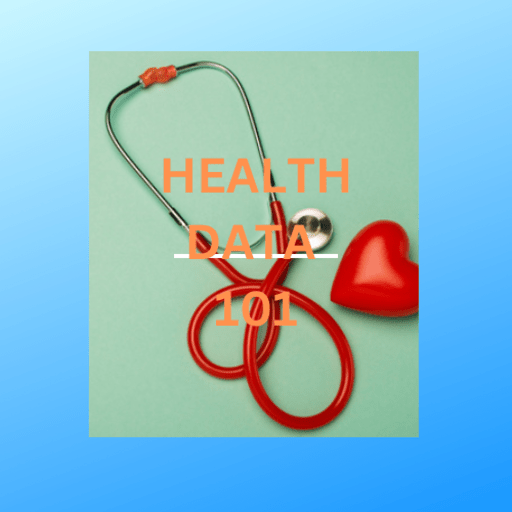
Health Data 101 - App on Amazon Appstore
Healthdata101-Manage Hospital and Health data.
https://www.amazon.com/gp/product/B0D514TH5SWhat strategies can be implemented to enhance healthcare infrastructure in remote and underserved regions?
By Hugo Keji
Enhancing healthcare infrastructure in remote and underserved regions requires a multi-faceted approach that addresses the unique challenges these areas face.
1. Telemedicine and Mobile Health Technologies
Telemedicine Services: Implement telemedicine platforms to connect patients with healthcare professionals remotely. This allows for consultations, diagnosis, and treatment without the need for travel.
Mobile Health Apps: Develop and deploy mobile health applications that provide information, remote monitoring, and access to medical services.
Remote Monitoring Devices: Use wearable technology and remote monitoring devices to track patients' health conditions in real-time and alert healthcare providers if intervention is needed.
2. Infrastructure Development
Healthcare Facility Construction: Build new healthcare facilities, including hospitals, clinics, and health posts, equipped with necessary medical equipment.
Upgrading Existing Facilities: Upgrade existing healthcare infrastructure to improve sanitation, electricity, water supply, and internet connectivity.
Transportation Infrastructure: Improve roads and transportation networks to facilitate easier access to healthcare services and the transport of medical supplies.
3. Workforce Development
Training Programs: Establish training programs for healthcare workers, including nurses, midwives, and community health workers, to build local capacity.
Incentives for Healthcare Professionals: Provide financial incentives, housing, and educational opportunities to attract and retain healthcare professionals in remote areas.
Telehealth Training: Train healthcare providers in the use of telehealth technologies to enhance remote patient care.
4. Supply Chain Management
Efficient Logistics Systems: Develop efficient logistics and supply chain systems to ensure a consistent supply of medications, vaccines, and medical equipment.
Local Production: Encourage local production of essential medical supplies and equipment to reduce dependency on distant suppliers.
5. Health Education and Community Engagement
Community Health Programs: Implement health education programs to inform communities about disease prevention, nutrition, hygiene, and the importance of seeking medical care.
Engagement with Local Leaders: Work with local leaders and organizations to build trust and ensure community support for healthcare initiatives.
Cultural Sensitivity Training: Train healthcare workers to be culturally sensitive to effectively communicate and address the specific needs of diverse communities.
6. Financial Support and Policy Development
Government Funding: Advocate for increased government funding and budget allocation for healthcare in remote areas.
Public-Private Partnerships: Foster partnerships between the government, private sector, and non-governmental organizations to pool resources and expertise.
Health Insurance Schemes: Develop and implement affordable health insurance schemes to reduce the financial burden on underserved populations.
7. Data Collection and Research
Health Information Systems: Establish robust health information systems to collect and analyze data on health indicators, service delivery, and patient outcomes.
Research Initiatives: Conduct research to identify specific health challenges in remote areas and develop targeted interventions.
Monitoring and Evaluation: Implement monitoring and evaluation frameworks to assess the effectiveness of healthcare programs and make necessary adjustments.
8. Emergency Preparedness
Disaster Response Plans: Develop and implement disaster response plans to ensure healthcare services are available during emergencies.
Emergency Medical Services: Establish emergency medical services, including ambulance networks and emergency response teams, to provide timely care.
Enhancing healthcare infrastructure in remote and underserved regions requires a comprehensive approach that integrates technology, infrastructure development, workforce training, supply chain management, community engagement, financial support, data-driven decision-making, and emergency preparedness.
By addressing these key areas, it is possible to significantly improve healthcare access and outcomes for populations in these regions.
SHARE YOUR COMMENTS AND QUESTIONS........
++++++++++++++++++++++++++++++++++++++++++++++
Health Data 101 by SapperTek INC registered in Taiwan.
With servers in Asia, Europe and America.
Hospitals, Private Clinics, Federal, State and Local Government health departs gets an online storage of all it's data secured 24/7/365
For ONLY USD$5 ... Your patients will appreciate it. Hospitals don't need paper work/cards again.
BE A PARTNER IN YOUR COUNTRY.
Contact for details: Email: sappertekincgmail.com
Absolutely risk free and FREE for download...
https://www.amazon.com/gp/...
https://healthdata101.com
By Hugo Keji
The Role of Technology in Improving Healthcare Delivery in Africa.
1. Telemedicine
Summary:
Telemedicine can bridge the gap between healthcare providers and patients in remote areas, offering access to consultations, diagnosis, and follow-up care.
Applications:
Remote Consultations:
Video and audio consultations for patients in remote areas to access specialists.
Use of telemedicine platforms to reduce travel time and costs for patients.
Specialist Access:
Connecting rural healthcare providers with specialists in urban centers for expert opinions.
Facilitating tele-mentoring and training for rural healthcare workers.
Impact:
Improved access to healthcare services.
Reduced burden on urban healthcare facilities.
Enhanced quality of care in rural areas.
2. Mobile Health (mHealth)
Summary:
Mobile health applications and services can deliver health information, track health metrics, and support healthcare workers in real-time.
Applications:
Health Information:
SMS and app-based health education campaigns on topics like maternal health, vaccinations, and disease prevention.
Dissemination of information about available health services and facilities.
Data Collection and Monitoring:
Use of mobile apps for tracking patient health metrics and reporting disease outbreaks.
Real-time data collection for health research and policy planning.
Support for Health Workers:
Mobile tools for health workers to manage patient records, schedule appointments, and access medical guidelines.
Platforms for continuous medical education and training.
Impact:
Improved health literacy among the population.
Enhanced data accuracy and availability for health decision-making.
Increased efficiency and effectiveness of healthcare workers.
3. Electronic Health Records (EHR)
Summary:
Implementing EHR systems can streamline patient record management, improve continuity of care, and enhance data security.
Applications:
Patient Records:
Digitalization of patient records for easy access and sharing among healthcare providers.
Integration of EHR systems across different healthcare facilities for coordinated care.
Data Analytics:
Use of EHR data for health analytics and reporting.
Identifying health trends and managing public health interventions.
Impact:
Improved accuracy and accessibility of patient records.
Better coordination and continuity of care.
Enhanced ability to monitor and respond to health trends.
4. Health Information Systems (HIS)
Summary:
Developing robust health information systems can improve health planning, management, and decision-making at all levels of healthcare delivery.
Applications:
Disease Surveillance:
Real-time tracking and reporting of disease outbreaks.
Early warning systems for epidemic prevention and control.
Resource Management:
Monitoring of healthcare resources, including drugs, equipment, and personnel.
Allocation of resources based on real-time data.
Impact:
Enhanced capacity for disease prevention and control.
Improved efficiency in resource allocation and management.
Data-driven health policy and planning.
5. Diagnostic and Treatment Technologies
Summary:
Advanced diagnostic and treatment technologies can improve the accuracy and effectiveness of medical interventions.
Applications:
Point-of-Care Diagnostics:
Use of portable diagnostic devices for rapid testing of diseases like malaria, HIV, and tuberculosis.
Mobile labs for conducting tests in remote areas.
Treatment Technologies:
Deployment of medical devices like ultrasound machines and portable X-rays in rural clinics.
Use of technology for minimally invasive surgeries and advanced treatments.
Impact:
Faster and more accurate diagnosis of diseases.
Improved access to advanced medical treatments in remote areas.
Reduction in referral times and associated costs.
6. Health Education and Training
Summary:
Technology can enhance health education and training for both healthcare workers and the general population.
Applications:
E-Learning Platforms:
Online courses and training modules for healthcare professionals.
Virtual simulations and interactive learning tools for medical education.
Public Health Campaigns:
Use of social media and online platforms to conduct health awareness campaigns.
Digital tools for community health education and engagement.
Impact:
Continuous professional development of healthcare workers.
Increased public awareness and engagement in health issues.
Improved health outcomes through better education and training.
Technology can play a transformative role in improving healthcare delivery in Africa by enhancing access to medical services, improving health information systems, supporting healthcare workers, and advancing diagnostic and treatment capabilities.
Through strategic investments and collaborations, technological innovations can address many of the healthcare challenges faced by African countries, leading to better health outcomes and a stronger healthcare system.
SHARE YOUR COMMENTS AND QUESTIONS........
++++++++++++++++++++++++++++++++++++++++++++++
Health Data 101 by SapperTek INC registered in Taiwan.
With servers in Asia, Europe and America.
Hospitals, Private Clinics, Federal, State and Local Government health departs gets an online storage of all it's data secured 24/7/365
For ONLY USD$5 ... Your patients will appreciate it. Hospitals don't need paper work/cards again.
BE A PARTNER IN YOUR COUNTRY.
Contact for details: Email: sappertekincgmail.com
Absolutely risk free and FREE for download...
https://www.amazon.com/gp/... https://healthdata101.com









